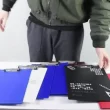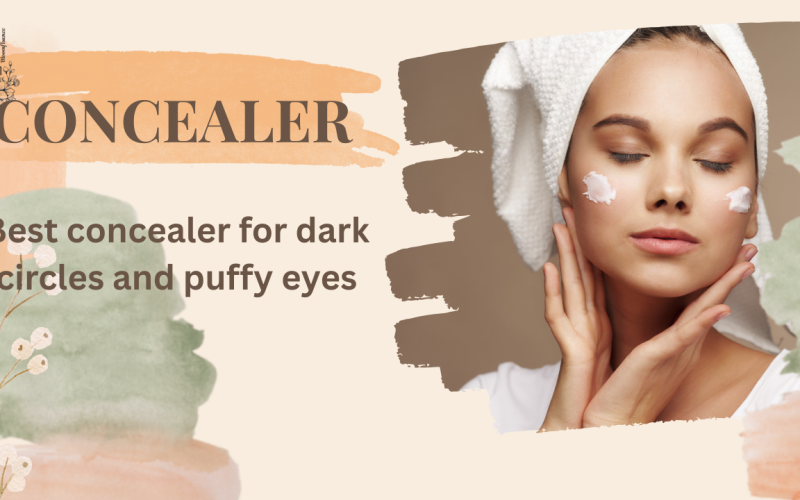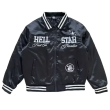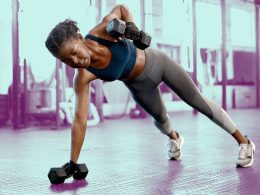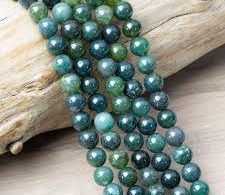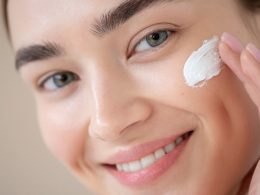This pick from Hourglass offers a ton of coverage but mimics the true texture and finish of real skin. It packs a punch in terms of pigmentation, but unlike some full-coverage concealers that are matte and dry, this one has a natural finish and is a total breeze to blend. Just a few dots were all we needed to cancel out discoloration and brighten our under-eyes. We could add a bit more product to create a more glam look, but we loved that whether we used just a dot or built it up, it maintained a natural, blurred finish.
Some testers got excellent wear out of this formula, while others experienced a bit of creasing and found that it highlighted dryness. Applying an eye cream first and setting it in place with a fine translucent powder yields the best results. We also found that the shades run pretty yellow, so we hope the brand expands the colour selection with some more cool-toned options.
FOR A REFRESHED-LOOKING UNDER EYE AREA
The under-eye area is a fussy diva! Its needs are like no other. The skin there is extra delicate, thin, and susceptible to discoloration like dark circles if you lose even an hour’s worth of sleep. But your whole face looks fresh and brand new when it’s fresh and well-restored. Taking care of this tricky area with concealer for dark circles is worth it! Find out how to cover dark circles under your eyes with our best concealers for dark circles.
What to Look for When Buying a Concealer
Formula:
Concealers come in different formulas—like liquids, creams, and sticks—and can be used for various purposes. Professional makeup artist Amber Amos says thicker formulas like creams or sticks are great for concealing blemishes because they tend to stay in place and offer great coverage. Liquid and more emollient formulas are nice for under the eyes because they create a fresher and more natural look.
Shade Range:
The best concealer shade depends on what you’re using it for. Celebrity makeup artist Kelli Anne Se-well recommends using a concealer under your eyes that’s one to two shades lighter than your skin tone and has slightly pink undertones to cancel out dark circles. If you want to cover blemishes, she recommends getting a shade as close to your skin tone as possible.
Finish:
Concealers come in a variety of finishes, like matte, natural, radiant, and dewy. If you have oily skin, one with a natural or matte finish will probably wear better on you. If you have dry skin, one with a radiant or dewy finish can help enhance luminosity.
HOW DO I APPLY UNDER-EYE CONCEALER?
Applying under-eye concealer brightens your eyes and helps you look refreshed. Follow these steps for applying under-eye concealer:
- Gently tap a hydrating eye cream onto your under-eye area with your ring finger.
- Apply foundation all over your face.
- Dot a small amount of concealer in the inner corner of your eye and a thin line of concealer on the outer side of your eye.
- Allow the concealer to absorb for a minute.
- Blend the two areas with either a concealer brush or your finger.
- To set the under-eye concealer, apply a setting powder one shade lighter than your natural skin tone.
Which concealers are best for under the eyes?
Although the best under eye concealers come in liquid and cream formulas, New York City-based makeup artist Suzy Gerstein prefers the former. Per Gerstein, liquid formulas often “look more skin-like and tend to be more flexible with the drier, finer under eye area than a sticky, heavier formula.”
However, that’s not to say cream formulas won’t do the job well, either. While bi-coastal makeup artist Kirin Bhatty tends to favour liquids, she points out that she will “lean towards a cream” for heavier coverage.
How do I apply concealer on my under eyes?
Los Angeles-based makeup artist Molly R. Stern recommends dotting a small amount of product to the under eye area closest to the nose before blending outward with a brush or sponge to ensure the concealer spreads evenly. On the other hand, Beatty likes applying concealer with her fingertips, which allows for “seamless blending,” but whichever you prefer works perfectly.
When in doubt, a little goes a long way. You can build your coverage easily but, if you use a heavy hand at first, you may need to start over. “I use just concealer to even out the skin with a lot of clients,” Los Angeles-based makeup artist Robert Pekineses told Allure. “I find that depending on the [skin] concerns, spot-treating with concealer is a great way to let the skin breathe and use much smaller amounts of product versus fuller-coverage foundation that isn’t always necessary.”
Why We Love It: I’ve been an Ilia concealer fan since my cousin told me her fellow ICU nurses love how the high-coverage formula keeps their skin hydrated in the frigid and drying hospital temperatures. Our tester also confirms it made her “super dry skin” look dewy, radiant, and bright enough to light up the dark circles she frequently brings into the office. Plus, she noticed a difference from the included skincare ingredients. Aloe leaf, for instance, helped soothe redness and decrease puffiness around the eyes, while vitamin C mitigated her dull texture.
Who It’s For: Minimal makeup wearers or sensitive skin warriors who prefer not to pile on products will appreciate how this ultra thin formula provides impressive coverage with three tiny dots. The applicator picks up just the right amount of product, and the formula blends easily, making the application much more seamless.





